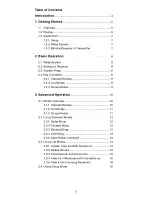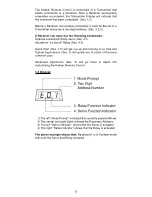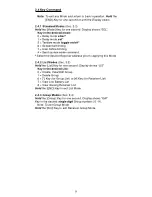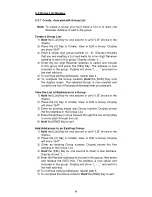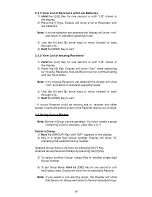
10
3 Advanced Operation
Note: We recommend reading this chapter before moving on to
Section 4 Typical Application.
3.1 Modes Overview
There are user Modes that enable you to uniquely setup and
manage your system. (Standard, List & Group Modes)
3.1.1 Standard Modes
Standard Modes help you customize many of your system’s operations.
These Modes Are: Delay, Tandem and Binding.
With Standard Modes you can:
- Send a command to a Receiver to be carried out immediately
and remain in that state or (Delay) for 30 seconds before
returning to it’s original position. This feature is very useful
when some extra time is needed to perform other operations
without the need to manually re-address the Receiver and set
it back to its original position.
Example:
A switch yard locomotive is a perfect example for
Delay Mode. Opening the locomotives coupler(s)
enables a car to be dropped, and locomotive control
can resume without needing to manually close the
coupler(s) in order to pick up another car.
- Tandem offers more adaptation by enabling you to operate both
the Receivers Servo (motor) and Relay simultaneously.
Example:
The Relay can be used to turn on an indicator light
giving a visual indication that you have actuated a
feature on your layout.
- Binding receivers can be achieved Sequentially or by User
Defined Binding.
(Binding is required for communication
between the Transmitter and Receiver)
When Binding
Sequentially, the Transmitter will automatically Bind the
Receiver with the next available Address. User Defined Binding
allows you to manually assign the Receivers Address.
Summary of Contents for RC
Page 1: ...Transmitter User Guide...


